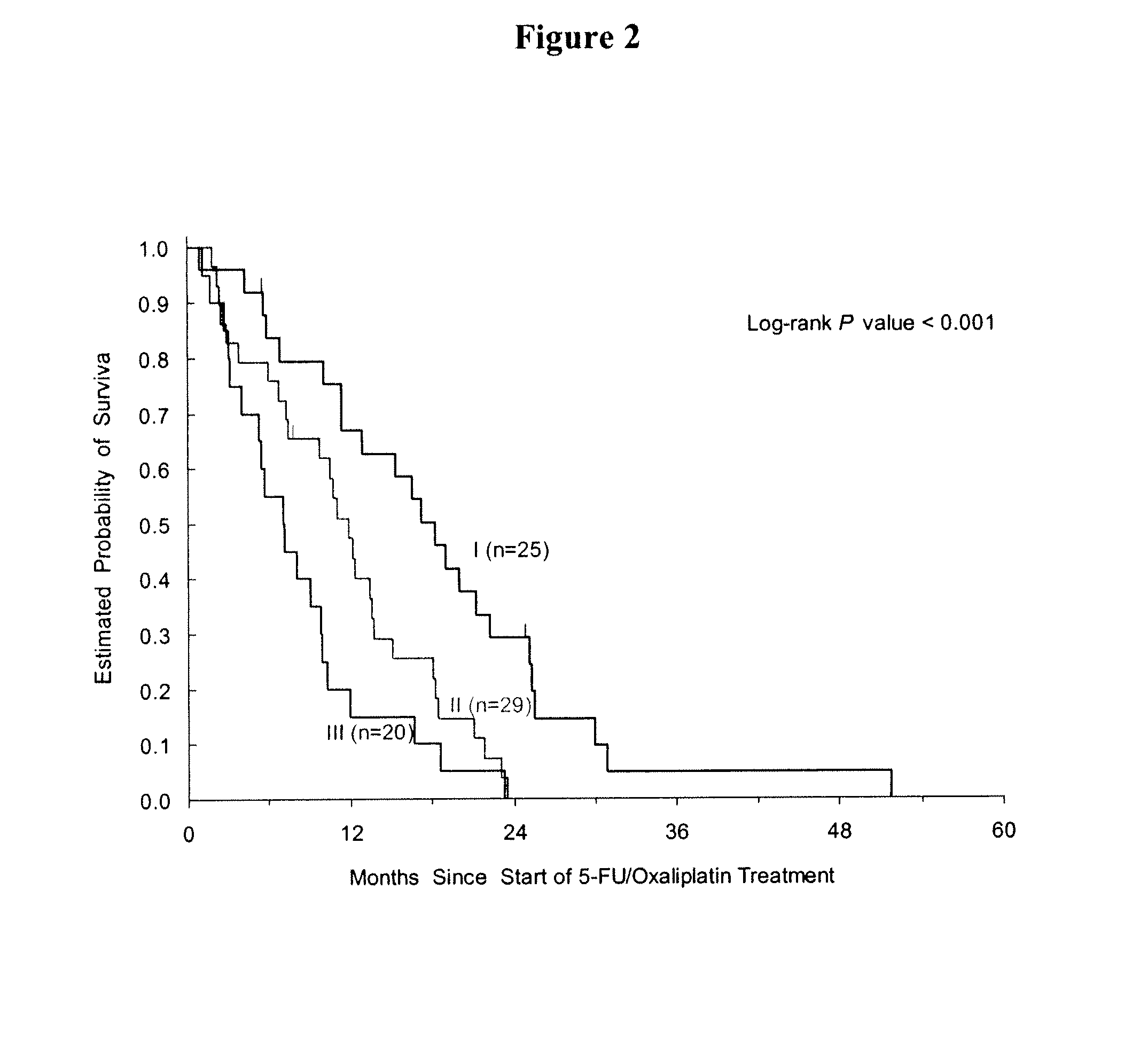Gene Polymorphisms as Sex-Specific Predictors in Cancer Therapy
a gene polymorphism and cancer therapy technology, applied in the field of pharmacogenomics, can solve problems such as limited cancer chemotherapy
- Summary
- Abstract
- Description
- Claims
- Application Information
AI Technical Summary
Benefits of technology
Problems solved by technology
Method used
Image
Examples
experimental examples
Experiment No. 1
[0209]For the purpose of illustration only, peripheral blood sample can be collected from each patient, and genomic DNA can be extracted from white blood cells using the QiaAmp kit (Qiagen, Valencia, Calif.).
[0210]Background: There is increasing evidence that gender plays a significant role in the development and progression of colorectal cancer (CRC). Rates of CRC incidence are higher among males, and it has been shown that hormone replacement therapy in postmenopausal women reduces the risk of developing CRC, indicating a protective effect of female hormones. These findings indicate that physiological differences between the sexes may contribute to differential tumor development and progression. In the current study, we tested the hypothesis whether males and females would have different genomic profiles that would predict clinical outcome in 5-FU / oxaliplatin-treated mCRC.
[0211]Methods: 173 patients were enrolled in this phase II study. 152 patients were available ...
PUM
 Login to View More
Login to View More Abstract
Description
Claims
Application Information
 Login to View More
Login to View More - R&D
- Intellectual Property
- Life Sciences
- Materials
- Tech Scout
- Unparalleled Data Quality
- Higher Quality Content
- 60% Fewer Hallucinations
Browse by: Latest US Patents, China's latest patents, Technical Efficacy Thesaurus, Application Domain, Technology Topic, Popular Technical Reports.
© 2025 PatSnap. All rights reserved.Legal|Privacy policy|Modern Slavery Act Transparency Statement|Sitemap|About US| Contact US: help@patsnap.com



